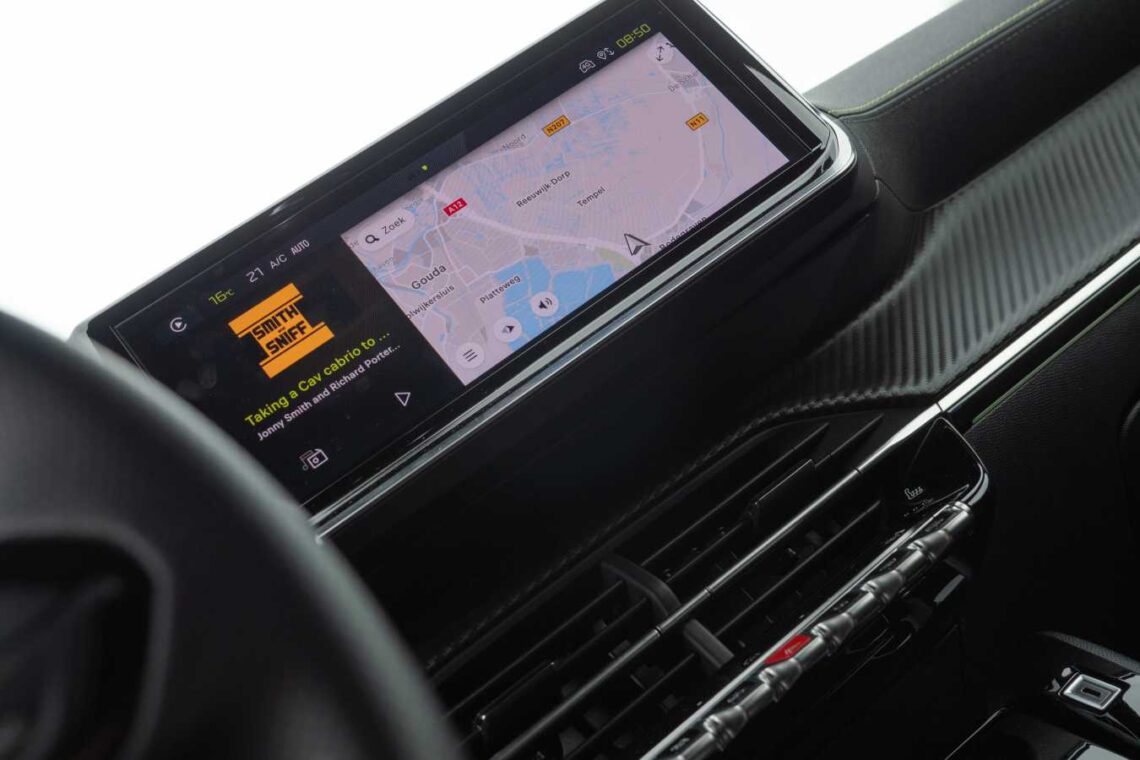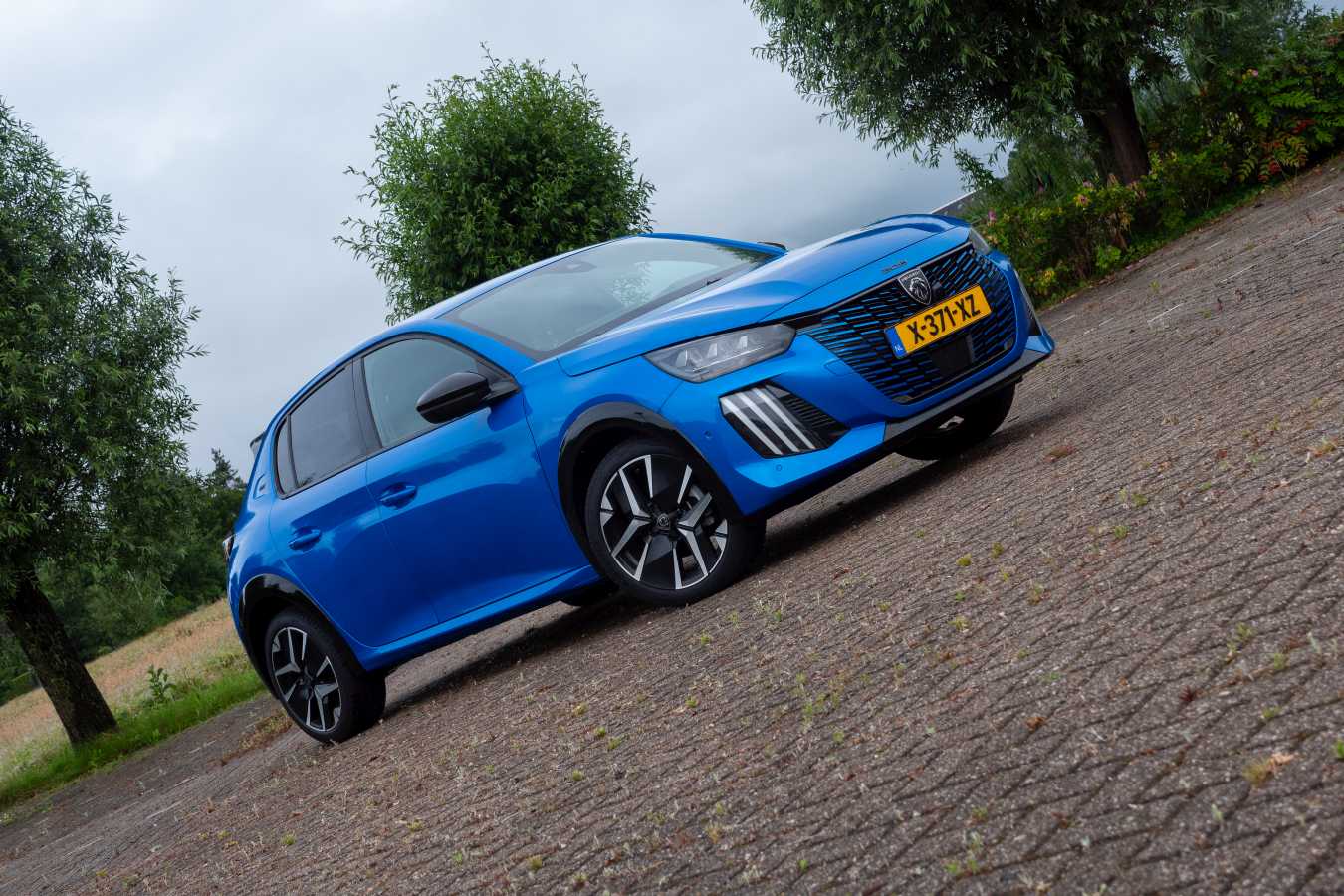Review – Peugeot 208 Hybrid (2024) – Why it is so popular in the Netherlands
Sales topper
The Peugeot 208 is selling like hot cakes. The model regularly tops sales lists. Now it has been renewed. The French have tackled the interior and exterior, and the technology has also been held up to the light. Earlier we drove the electric E-208, now it’s time for the gasoline-powered 208.
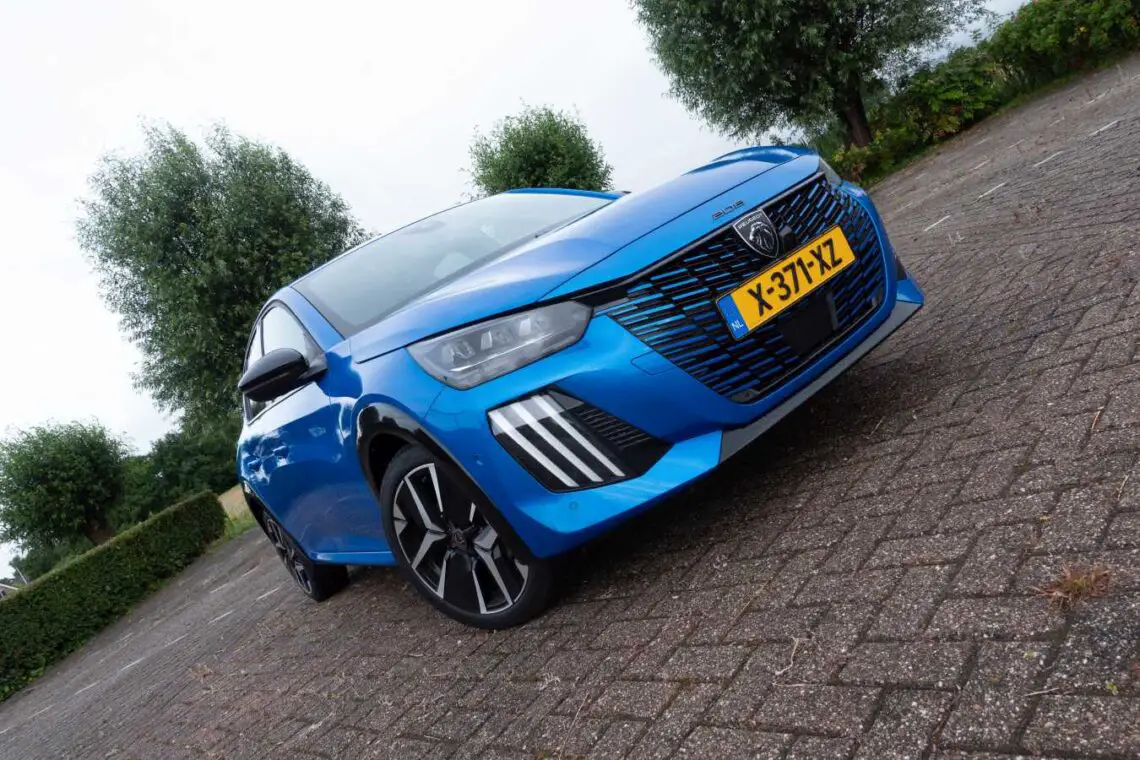
Peugeot 208 on gasoline
The compact French hatchback is available with a range of powertrain options that cater to both the traditional gasoline driver and the modern environmentally conscious motorist. For the purists among us – or for those who simply want to spend as little as possible – there is a traditional 1.2-liter three-cylinder gasoline engine, available with two outputs: 75 hp and 100 hp. Both variants are mated to a manual transmission. The 75-hp version has a five-speed transmission, while the 100-hp version is mated to a six-speed transmission.
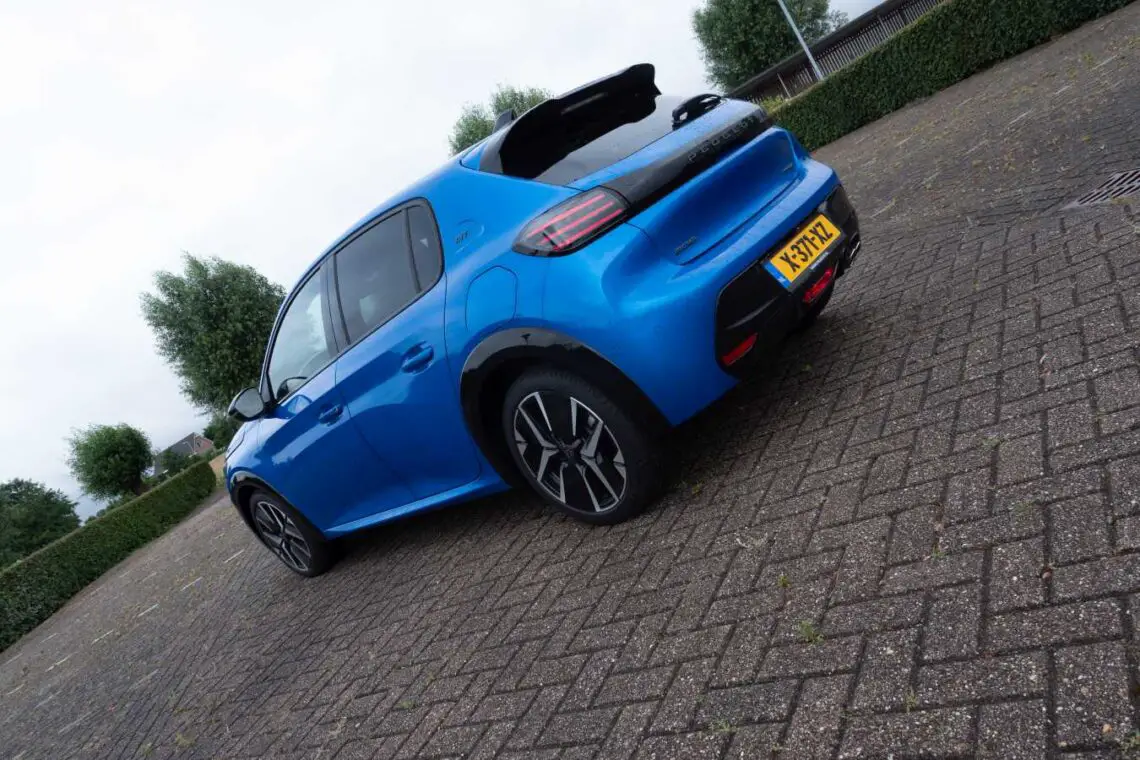
Mild-Hybrid
Peugeot also offers mild-hybrid versions, referred to simply as “Hybrid. It uses the same 1.2 gasoline engine, but mated to a six-speed automatic and equipped with mild hybrid technology. You have a choice of a 100-horsepower version or a more powerful 136-horsepower version. We drive the strongest, which is listed as Hybrid 136 is the price list.
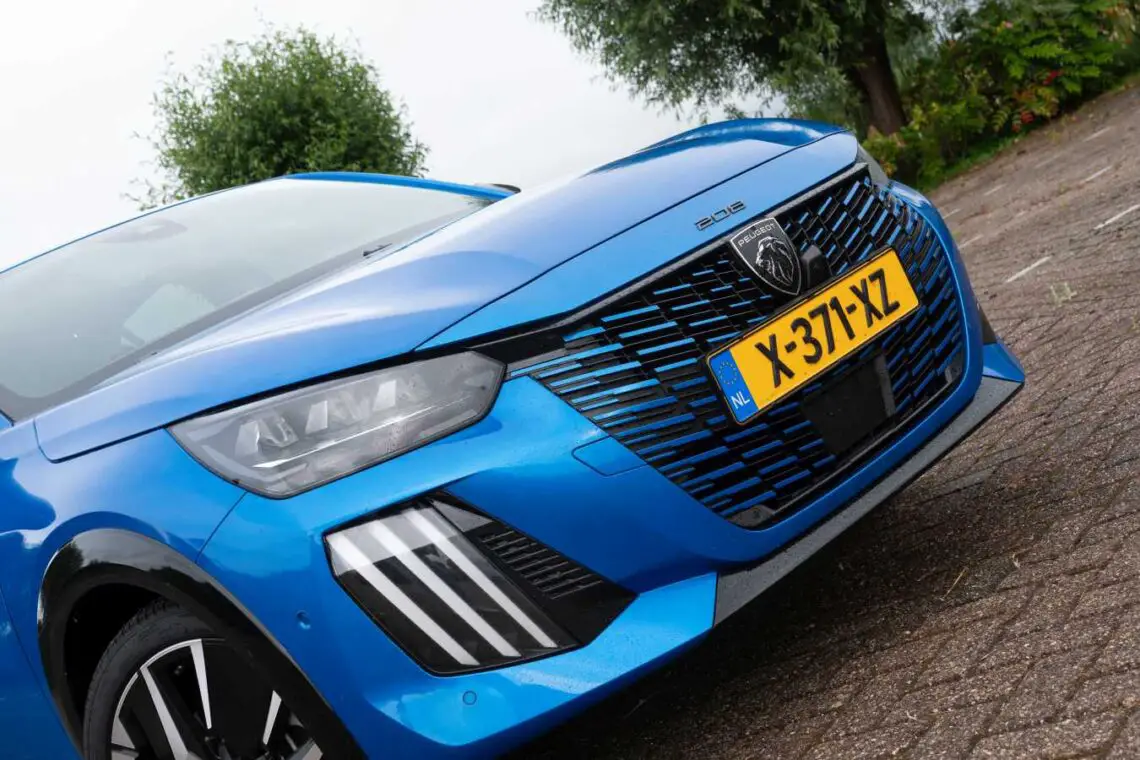
Well-known powertrain
The 1.2 engine is a relatively new powertrain within the Stellantis Group, Peugeot’s parent company. You will also find it in models from Opel and Citroën. But also in the new Peugeot 3008 and 5008. The 208 is considerably smaller than Peugeot’s two SUVs, which means it is quite smooth at 136 hp. Just quickly overtaking someone is no problem and at the traffic light you are certainly not the last to leave.
Consumption
The hybrid has a small electric motor mounted between the combustion engine and the gearbox. The 208 Hybrid has no plug; it charges itself while driving by braking on the electric motor, which then acts as a dynamo. You notice this immediately when you let off the gas – the car brakes almost as much as an all-electric car. That may take some getting used to for newcomers to the world of regenerative braking. The result is impressively low fuel consumption. Without too much effort, we achieve an average consumption of 1 to 19. Not bad, because during the test week we maintain a smooth driving style. After all, we are driving the sporty GT.
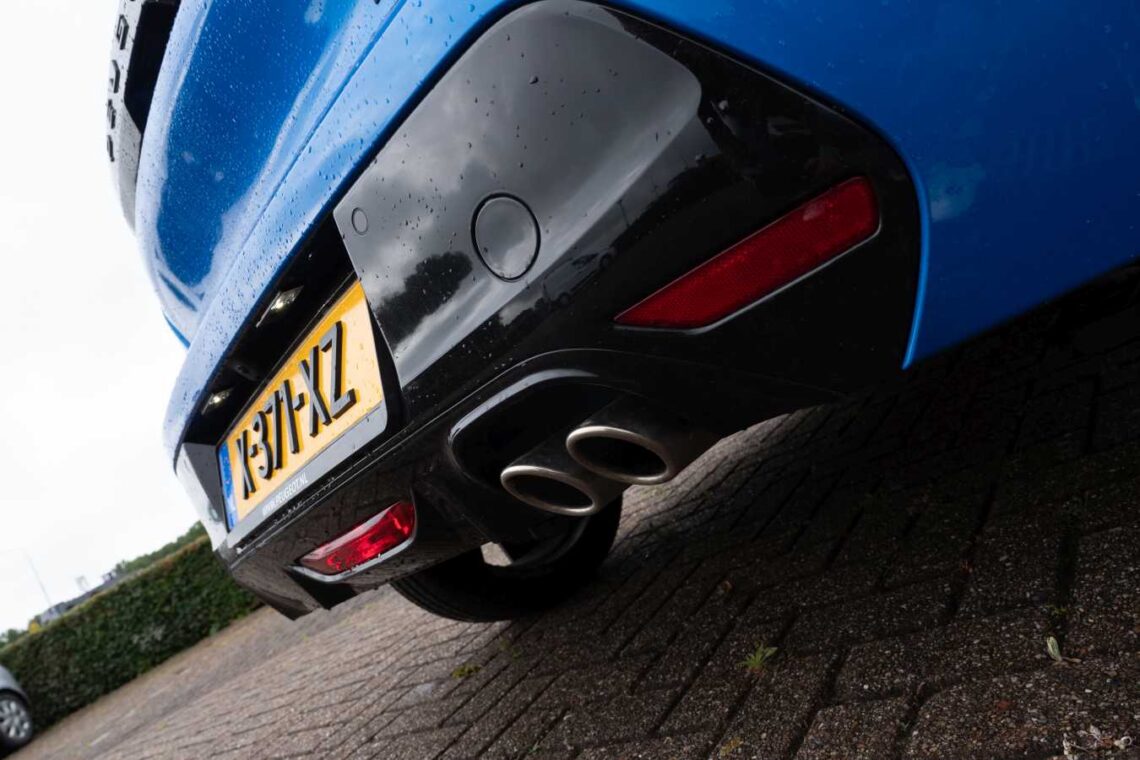
208 GT
Sporty, you say? Yes, the GT is sportier than the other two versions, the Active and Allure. But that’s because the GT always has the most powerful powertrain at 136 hp. The 75 and 100 hp variants are not available for sale as GTs. The GT’s suspension has not been modified, so mainly the engine power and trim provide a sporty feel. In the interior you will encounter many bright green accents and GT logos. The seats hold you well in your seat and offer great comfort. Carbon fiber trim on the dashboard completes the look.
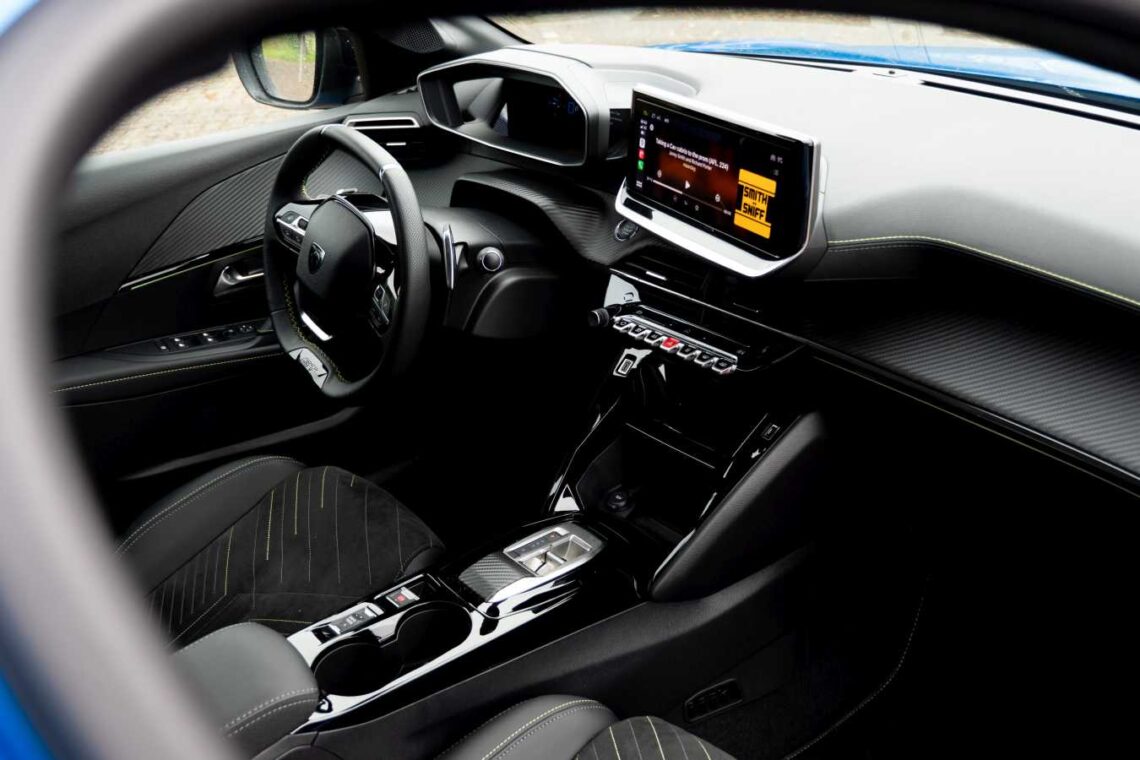
Travel companion
Although the all-electric E-208 has more sporty genes, thanks to its readily available torque and low battery center of gravity, the hybrid variant certainly does not disappoint. It proves surprisingly capable in turns, offering a good balance of stability and agility. Above all, the hybrid 208 offers the kind of comfort you would expect from a French car. The suspension is forgiving, absorbing uneven road surfaces well. On poor road surfaces, the rolling noise of the tires does stand out. Fortunately, the asphalt is often in good shape in the Netherlands.
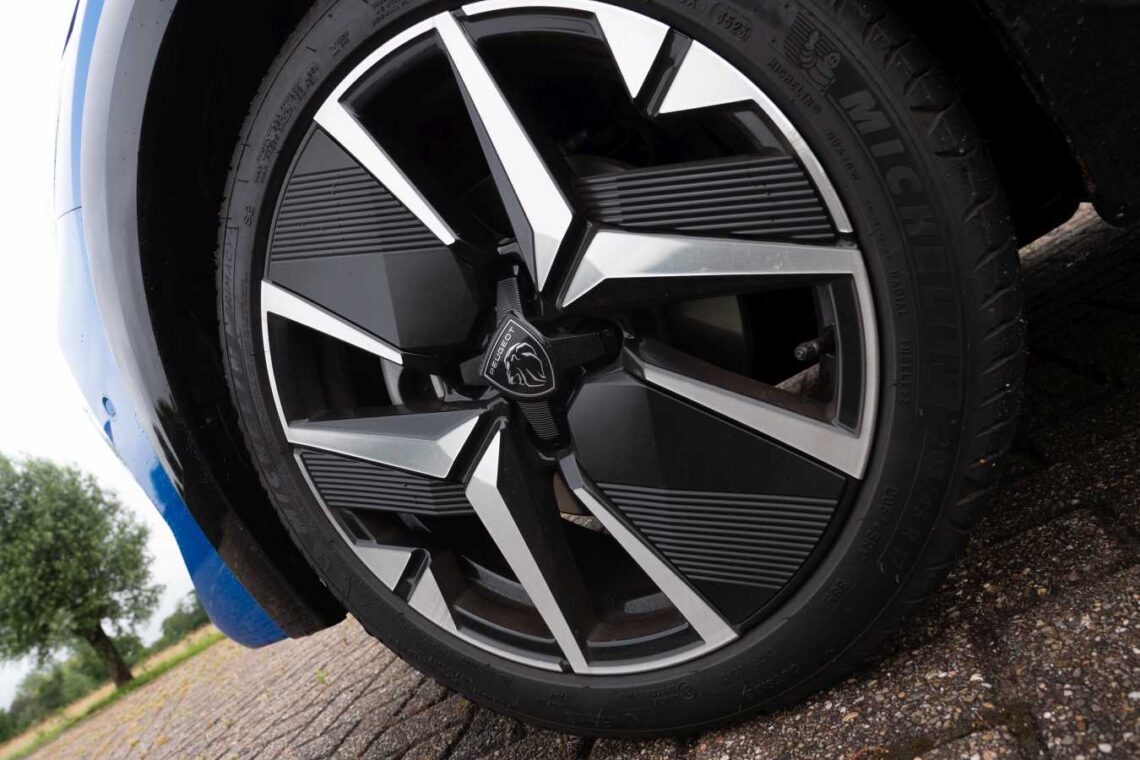
Peugeot E-208:
Those who prefer to drive electric should have the E-208. There are two different powertrains: a 136 hp electric motor combined with a 50 kWh battery pack, good for a WLTP range of 363 kilometers. The second option offers slightly more power with a 156 hp electric motor and a 51 kWh battery pack, good for a range of 400 kilometers. As standard, the E-208 is equipped with 3-phase charging, and with a fast charger it can handle 100 kW of charging power. After half an hour, the battery is back to 80%. In this video, we tell you more about the electric 208.
Peugeot 208 facelift: what’s new?
On the outside, the Peugeot 208 has been refreshed. The grille has widened and now has elegant bars filling it. The daytime running lights consist of three LED bars side by side, a subtle nod to the lion on the Peugeot logo. The headlights retain the same shape, but are slightly modified internally. Also, the new Peugeot logo proudly adorns the nose and the model name is again written out on the hood, but now in a different font. From now on, the mirror caps are always black, regardless of the version. There are 16- and 17-inch wheels, and the GT version we tested has black wheel arch trim.
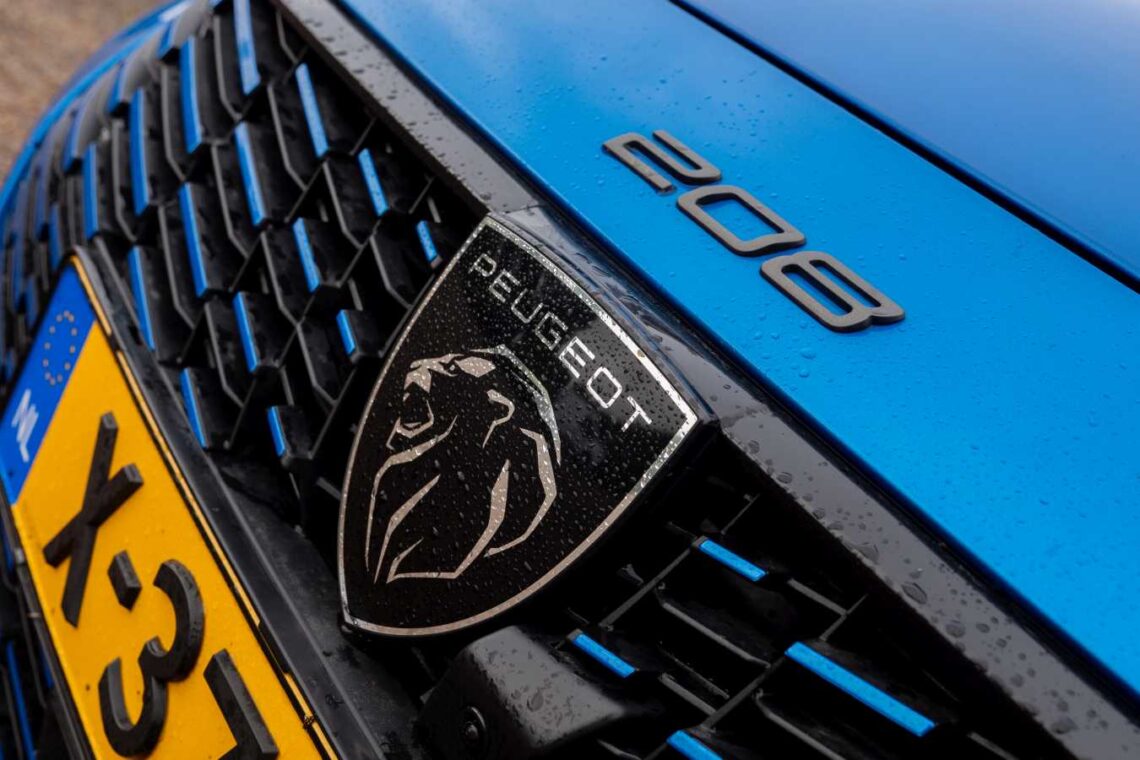
On the back end, the changes are also evident. The taillights now have horizontal LED stripes, instead of the vertical stripes of before. The Peugeot logo is gone and in its place “Peugeot” is completely written out. Our test car also subtly has the letters “GT” in the C-pillar.

Interior
Inside, the changes are subtle. The Peugeot logo on the steering wheel has been updated and the instrument cluster has become a 10-inch display. In the entry-level version, you get a compact 3.5-inch screen here. The infotainment screen has been enlarged from 7-inch to now standard 10-inch, and offers new software. Connecting your phone to the car via Apple CarPlay and Android Auto can now be done without a cable. In the front, two USB-C ports are standard, while in the back, one USB-C and one USB-A port are available.
What does the Peugeot 208 cost?
The entry-level gasoline starts at 24,900 euros. The Hybrid 100 starts at 28,200 euros, while the Hybrid 136 we drive comes from 32,800 euros. The electric E-208 with a 50 kWh battery and 136 hp costs 35,870 euros, and the version with a 51 kWh battery and 156 hp starts at 41,170 euros.
